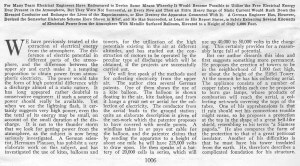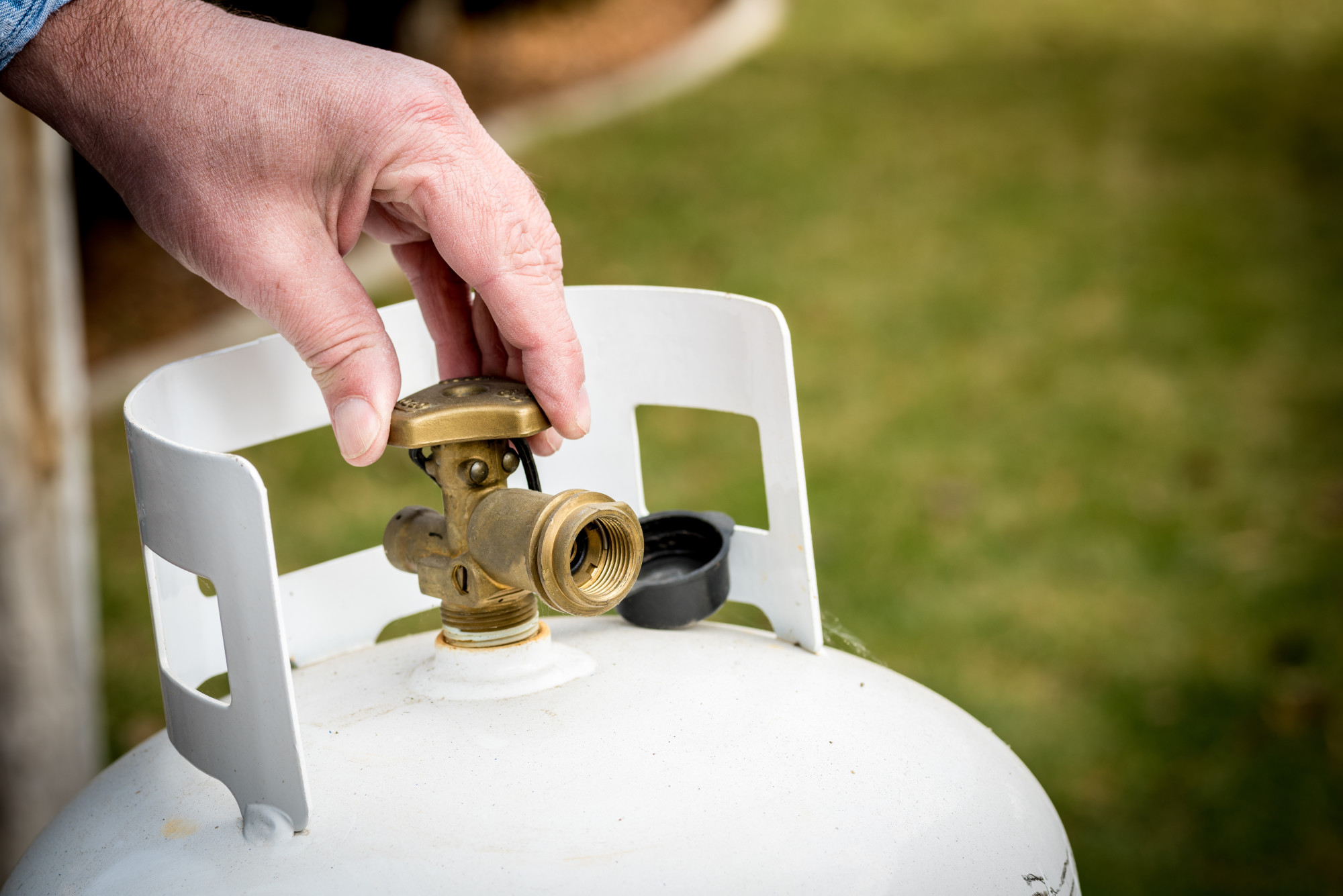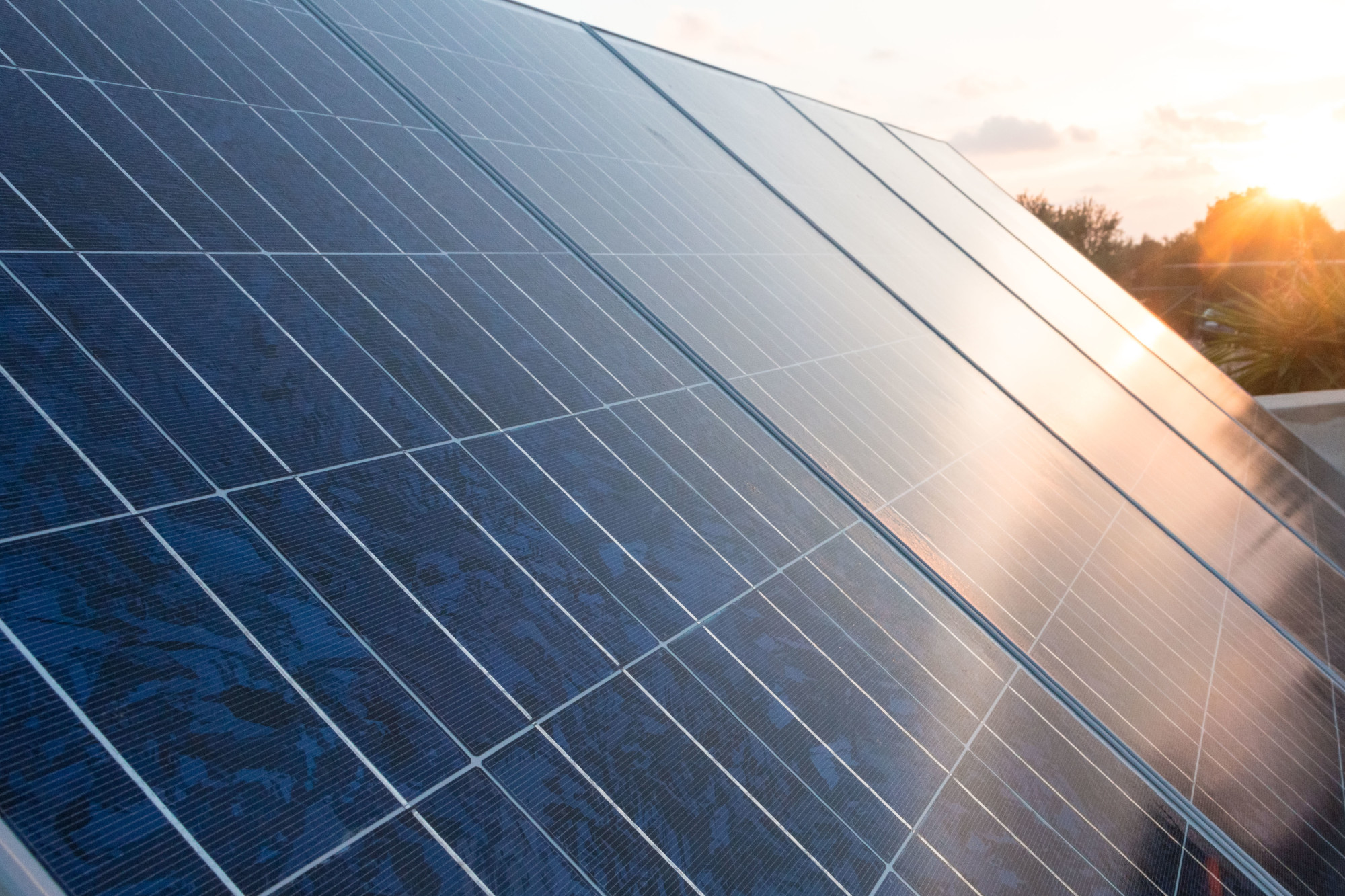Science and Invention, formerly Electrical Experimenter
An article that reviews Plauson’s elaborate work on the subject of extracting of electrical energy from the atmosphere: methods used for collecting electricity from the upper air, practical details.
多年来,电气工程师致力于设计一些手段,即将有可能利用在大气中存在的自由电能,但它们并不成功,因为现在,尽管静态电流的超重激增会匆匆下降升高的导体并危及实验者的生活,或者避开与之相关的设备。然而,德国工程师已经简要介绍了这里显示的有些精心制作计划,并且他已经成功地成功,至少是他的报告国家,在安全地从气体表面气球中安全地从大气中提取了几千瓦的电力,升高到高度只有1000英尺。
我们以前提取的el治疗ectrical energy from the atmosphere. The difference of electric potential in different parts of the atmosphere, and the difference between the upper air and earth make it a tempting proposition to obtain power from atmospheric electricity. The power would take the form of high potential difference with a discharge almost of a static nature. It has long appeared rather doubtful to conservative engineers, if such a source of power should really be available. Yet when we see the lightning flash, it certainly suggests very high power, even though the total of its energy may be small, on account of the small duration of the discharge It is not to the thunder storm that we look for getting power from the atmosphere, as the subject is now being seriously investigated. A German scientist, Hermann Plauson, has published a very elaborate work on this subject, and has investigated the use of kites, balloons and towers, for the utilization of the high potentials existing in the air at different altitudes, and has studied out the construction of motors to be operated by the peculiar type of discharge which will be obtained, if the projects are successfully carried out.
We will first speak of the methods used for collecting electricity from the upper air. The author cites several German patents. One of them shows the use of a kite balloon. The balloon is shown floating in the air, kite fashion, and from it hangs a great net or aerial for the collection of electricity. The conductor from the aerial leads to the ground station; quite an elaborate description is given of the net-work which the patentee proposes to have covered with needle points. A windlass takes in or pays out cable for the balloon, and the patentee claims that by sending the apparatus to a height of about one mile he will have 225,000 volts to draw upon. He then speaks o a battery of 20,000 cells in series, which will use up to 40,000 to 50,000 volts in the charging. This certainly provides for a reasonable large fall of potential.
But our author discards this idea and first suggests something more permanent. He proposes the erection of towers to be in the neighborhood of 1,000 feet high, or about the height of the Eiffel Tower. At the summit he has his collecting aerial. The appliance consists of a number of copper tubes; within each one he proposes to burn gas lamps, whose products of combustion will reach the aerial, a collecting net-work covering the tops of the tubes. One of his apprehensions is that if rain should wet his connections trouble might ensue, so he proposes a protection at the top in the shape of a great bell-like shield, resembling in his terms “a Siamese pagoda”. He also compares the form of the protection to that of a great petticoat insulator. Another of his difficulties is that he must have his tower insulated from the earth. He, therefore describes a complicated foundation for his structure. He proposes first to pour in at the bottom of the excavation a foundation of simple concrete. On this he places a layer of asphalt, and then a layer of cast glass, three to ten feet thick, and then comes a reinforced concrete foundation, to which the metallic foot of the tower is to be anchored. This foundation must rise at least seven feet above the ground level, and is to be boarded in on all sides to protect it from moisture. The author’s idea s to erect a number of these towers connected by a horizontal cable, to which the aerials for collection of potentials are secured.
The author strongly advocates balloons as collectors of the electric power of the air. These he depicts covered with spots. These spots indicate areas to be variously coated and prepared to collect potential from the atmosphere.
首先,他描述了由内部肋骨支撑的薄金属叶制成的气球。钢丝镀银,镀铜或铝涂层,从气球运行到吊坠或接线环。对于该环,连接线缆并运行到地球表面上的绝缘挡风玻璃。气球是从300英尺到三英里的海拔高度。
斑点的涂层是最薄的汞合金,汞和金,或锌,甚至是聚镓,也许只有1/2500英寸厚。在气球的上表面上是无数的金属点。为了制备针状线,将它们收集到束中并在浴中电解处理,以便部分溶解。这给出了一个尖锐和粗糙的表面,适于收集电能。该点可以是铜,钢或一些硬金属合金。在这种腐蚀之后。由于它可以被称为,导线用金色或其他所谓的贵金属镀。建议将钯或镭盐添加到电镀浴中。
Dr Plauson devotes many pages of his book to describing his motor. This is a rotary motor including a stator and rotor and its peculiarity is that it contains no coils, develops no electromagnetic field properly speaking, but works by static excitation. One typical arrangement is shown in our illustration. The stator plates and rotor plates are concentric with each other, representing segments of cylinders. The alternation of negative and positive charged plates produces the rotation. In the connections there is included a safety spark gap to take care of dangerous potentials. Inductances and capacities are also used and indicated. It was found that the plates heated, owing to the Foucalt currents, and to overcome this, several methods of subdividing the stator and rotor plates, are described by the author.
The whole subject is quite captivating, and it really seems as if the utilization of the electricity of the air may be almost in sight. It would seem possible to carry out experiments in this direction by means of the Eiffel Tower, but of course, the trouble here is that the tower is grounded, and perfect insulation of the collecting surface is absolutely essential.
现在我们的作者给了我们一些实用的细节. He says that on the Finland plains he carried out experiments with a balloon made of aluminum leaf with collecting needles of amalgamated zinc with a radium preparation as an ionizer. The surface of the balloon was sprinkled over with zinc amalgam. It was sent up to a height of 300 meters, early 1,000 feet, and was held by a copper-plated steel wire. A constant current of 1.8 amperes at an average of 400 volts potential difference was obtained. This gave nearly three-quarters of a kilowatt, or close to one horsepower. The collector of the balloon insulated from the earth showed a tension of 42,000 volts. By sending up a second balloon with an antenna to the same height at a distance of 100 meters from the first balloon, a current of over 3 amperes was obtained. Then by putting into the circuit a large condenser, whose capacity was equal to the surface capacity of both balloons, and of the antenna connections, the current rose to 6.8 amperes with about 500 volts mean tension. By the use of these two balloons, he eventually ran up the power to 3.4 kilowatts.












